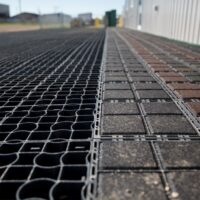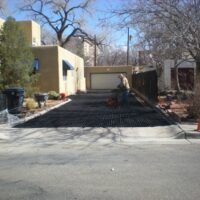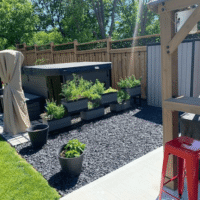Eco-Friendly & Easy: A Step-by-Step Guide to DIY Installing a Permeable Driveway
Are you thinking about refreshing your home’s look this summer? Or would you like to boost your resale value? If you’re a hands-on homeowner or DIY enthusiast, installing your permeable driveway might be the perfect project to help you achieve your goals.
Permeable driveways are more than just a trend. Modern homeowners are increasingly adopting sustainable solutions, from permeable paving areas to planting native plants.
Permeable pavement driveways help manage stormwater runoff, reduce the risk of flooding, and support sustainable landscaping. Additionally, with the innovative permeable paving products available today, you can undertake this project yourself without needing to hire a professional.
Before You Start Your Permeable Paver Driveway Project
Preparation
To help ensure your project is successful, take these key elements into account before starting:
- Soil Assessment: It’s essential that you have an understanding of your specific soil’s drainage ability. To do this, use a simple percolation test. If your soil doesn’t absorb water well, you may need additional drainage material.
- Choose Your System: There are many permeable driveway options available. Make sure the one you select aligns with your values and needs. Some companies, like Ecoraster, even offer multiple product lines, allowing you to choose the best one for your unique project.
- Plan & Measure: Accurately measure your space and calculate material needs, including base layers, pavers, and fill.
- Get Permits: Many people forget this step, but you don’t want to make that mistake! Many municipalities require permits, or if you’re lucky, offer incentives, for installing permeable pavement driveways.
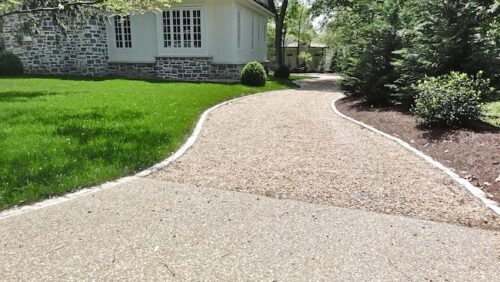
Tools & Materials
Gathering the right tools and materials before you begin will save you countless trips to the hardware store and keep your project running smoothly.
On top of getting the best Ecoraster permeable paving system, you should also have these essential tools handy:
- Shovels and rakes
- Wheelbarrow
- Plate compactor
- Level and string line
- Rubber mallet
- Excavator or skid steer (for larger jobs)
- Concrete saw or paver splitter
- Push broom
Base Material Choices
Depending on your chosen permeable system, you’ll need specific materials for base layers. Some examples of common base materials that you can place under your permeable pavement driveway include:
- 3/4″–2″ washed crushed stone
- 1/4″–1.5″ washed crushed stone
- 1/4″ stone or decorative gravel
Check the specs for your specific permeable pavers driveway system to ensure proper drainage and load-bearing capacity.
Get detailed Ecoraster product specifications for all our permeable paving products
How to Install a Permeable Driveway with Ecoraster
Now it’s time to get to the exciting part—bringing your permeable driveway to life! When installing Ecoraster for your permeable paving, follow these steps to ensure your project is both functional and visually appealing.
Step 1: Compact the Sub-Structures
Start by excavating the desired area of your driveway. Once your excavation is complete, it’s time to build your base.
Lay down your first layer of base material and, using your plate compactor, thoroughly compact this layer. Repeat for subsequent base layers, making sure that each is well-compacted.
This creates the essential void space for water infiltration and provides a stable foundation for your permeable paver driveway.
Step 2: Prepare the Levelling Course
On top of your compacted base, spread a thin, even layer of finer stone. This “bedding layer” creates a perfectly level surface for your Ecoraster grids, ensuring proper water flow. Use your level and string line to attain the desired grade.
Step 3: Install Ecoraster’s Interlocking Grids
Snap together the Ecoraster interlocking grids like puzzle pieces, laying the permeable paving system right on top of the prepared levelling course.
They’re lightweight, strong, and simple to lay out, even if your driveway is sitting on uneven terrain.
Step 4: Cut or Trim the Pavers as Needed
You’ll likely encounter edges, curves, or obstacles where full grids won’t fit. Use your concrete saw or paver splitter to carefully cut or trim the Ecoraster grids to size, ensuring a snug and professional finish.
Step 5: Tamp and Level Ecoraster
Once in place, gently tamp the surface with a rubber mallet to ensure everything is level. Once the Ecoraster grids are laid, use your rubber mallet to gently tap them into place. You want to make sure they’re firmly seated and level.
A quick pass with the plate compactor can also help further seat the grids.
Step 6: Fill Ecoraster with Choice Material
Fill your permeable driveway pavers with the material of your choice. With many of Ecoraster’s permeable grid systems, you can choose between fills such as crushed stone, gravel, concrete pavers, or even grass fill for a green look.
If you choose fill like gravel or sand, use a push broom to spread your chosen material evenly into the cells of the Ecoraster grids. Work the material into all the crevices to ensure complete infill.
Are Permeable Driveways Worth It?
This is a question we hear a lot; so, you’re not alone! Many homeowners carefully weigh their paving options, considering both the cost and long-term value.
The answer to this common question depends on your specific goals, property conditions, and priorities.
Permeable driveways are designed to allow water to pass through the surface rather than run off into storm drains. This can reduce pooling and the risk of ice patches in colder climates, especially if your area experiences heavy rainfall or poor drainage.
In some municipalities, permeable systems can also lower stormwater fees or reduce the need for additional drainage infrastructure. Additionally, cities like Ottawa have incentive programs that you can take advantage of if you decide to install permeable paving in your home.
While the upfront costs may be higher than those of some traditional concrete or asphalt options, some homeowners find the costs to be comparable.
This is especially true if you also consider the potential for reduced maintenance over time and the added curb appeal. In specific markets, particularly those with a focus on sustainability or prone to flooding, a permeable driveway may even contribute to a higher resale value.
Ultimately, whether a permeable driveway is worth it comes down to your long-term plans, your property’s specific drainage needs, and how much value you place on environmental impact and design.
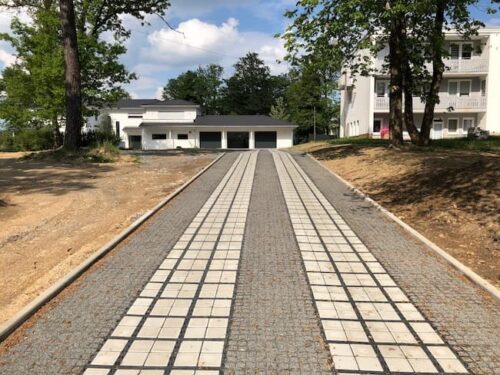
The Cost of a Permeable Paver Driveway?
Many people wonder about the cost of permeable paver driveway projects. Like any home improvement, you can expect many different factors to influence the final price tag. Some of these include:
- Size of the driveway: Naturally, a larger driveway will require more materials and labour, increasing your overall cost.
- Type and quality of pavers chosen: Not all permeable pavers are made equal. Be sure you pick a high-quality paver with a fair price—like Ecoraster!
- Complexity of the installation site: A flat, easily accessible site will be less costly than one with significant slopes, curves, or limited access, which will require additional labour.
- Additional drainage needs: If your soil has poor absorption, you may need to invest more in supplemental drainage material or an enhanced base. That being said, permeable systems are designed to mitigate this issue.
- Labour costs: While this guide is for DIY projects, if you hire professionals, total labour costs can vary significantly depending on the area, the availability of installers, local living costs, and demand for driveway installation services.
While the initial cost of a permeable driveway may seem steep, it’s worth considering the long-term benefits as well.
Permeable driveways reduce the need for complex stormwater management systems by allowing rainwater to filter directly into the ground, easing runoff and helping the environment. They also tend to require less maintenance than traditional concrete or asphalt surfaces, saving you time and money on repairs.
In areas where incentives or reduced stormwater fees are available, you may even see ongoing cost savings.
Ultimately, a well-designed, eco-friendly permeable pavement driveway can enhance your home’s curb appeal and potentially increase its resale value, making it a smart and sustainable choice for many homeowners.
Start Your Project Off on the Right Track
Whether you’re looking to upgrade your home to enjoy those long summer days, enhance curb appeal for a quick sale, or simply embrace a more sustainable lifestyle, a DIY permeable driveway project is one of the most impactful upgrades you can make.
Don’t view it as simply resurfacing your driveway or checking off another home improvement project. Think of it as an investment in your property’s long-term value, a step toward more sustainable living, and a way to create an outdoor space that’s both beautifully unique and built with purpose.
So, gather your tools, plan your steps, and get ready to transform your driveway into an eco-friendly masterpiece. Your home (and the planet!) will thank you for it.
While you’re planning to DIY this project, it doesn’t mean we’re not here to support you! Whether you have questions about which product line is best or how to obtain Ecoraster permeable systems, we’re here to help.
Connect with Ecoraster today to get the right permeable paving products and guidance tailored to your specific needs.


















